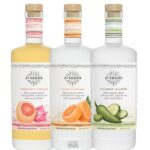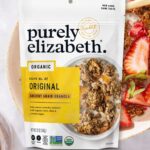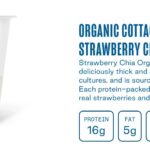When Amanda Hesser and Merrill Stubbs, founders of Food52 in Manhattan wanted to begin to market their line of cooking products, they did something unusual. Their company had sold other companies’ kitchen-related products for years. Over time, they developed a considerable list of loyal customers.
The two entrepreneurs surveyed 10,000 recent purchasers to see what was missing in a cutting board.
They thought they would start with a product that everyone uses, was at the heart of their brand and knew they could improve it. They got so many ideas that they were overwhelmed by the response but quickly saw how powerful the voice of these consumers could be to guide their Food52’s product line.
“Why don’t cutting boards have pourable corners to collect juice from drippings.”
“How about a place to put a phone so you can follow a recipe online.”
“It needs beveled edges, so it is easy to pick up.”
“It should be responsibly sourced and made of a durable material like maple.”
Serving a Community
 Amanda and Merrill have plans for more than 20 new products, but instead of having an internal team of product managers, it is looking for feedback and guidance from their community who bought related products from them over the last five years. Who better to tell them how to improve a wooden spoon or a whisk?
Amanda and Merrill have plans for more than 20 new products, but instead of having an internal team of product managers, it is looking for feedback and guidance from their community who bought related products from them over the last five years. Who better to tell them how to improve a wooden spoon or a whisk?
Marketing is best when it is designed to serve a specific community.
When was the last time you ask your current customers how to improve your existing product or to make a new product concept better?
The answers may surprise you because they may want less, not more. Or, they see a different approach to how the product fits with their needs and lifestyle. In some categories with deep customer engagement, you may see patterns that guide how you develop new products and differentiate your brand from the pack.
The Wisdom of the Crowd
Legend has it that Steve Jobs never asked customers what they wanted in a new computer. You have probably heard that Henry Ford is said to have remarked, that if you asked people, they would have wanted faster horses, not cars. Consumers may not have been able to articulate Uber, but they would have helped define a better user experience than taxis.
I strongly believe that the voice of the customer is critical to marketing products. Without it, you are just guessing, often from a remote cubicle. The closer you can be to the community you want to serve, the better you’ll hear that customer’s voice. Best of all, can you become part of the community you want to serve?
I heard about a couple who started an RV rental business. Before they started they rented an RV and spent a year on the road visiting RV grounds to talk and listen to consumers experiences. They designed their offering based on a year’s worth of real-world interactions with the community they wanted to serve.
As an experienced cook, the idea of a cutting board where you can pour the juices out of a corner spout is genius. Had they asked, I would have told them that same challenge I have with cutting boards.
There is wisdom in crowds. Are you listening?
Want to learn more about how to use the voice of the customer? You can set up a time to chat with me about your marketing challenges using my calendar. Email me jeffslater@themarketingsage.com Call me. 919 720 0995. The conversation is free, and we can explore if working together makes sense. Try my new chat feature on my site if you have a quick question.
CREDIT: Rocky Luten/Food52




